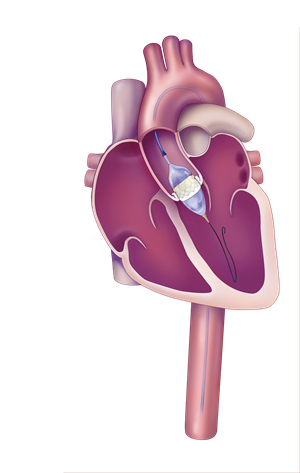Trans-catheter Aortic Valve Replacement - TAVR
TAVR is a new, less invasive, heart valve replacement procedure. It is FDA approved for people with severe aortic stenosis who are considered at intermediate or high risk for standard valve replacement surgery.
TAVR - A Patient Experience
Aortic stenosis is a condition in which the leaflets of the heart valve do not fully open and close. The heart must work harder to push blood through the aortic valve to the rest of the body. This weakens the heart and increases the risk of heart failure.
Traditionally, heart valve replacement requires an open-heart procedure and the surgical opening of the chest. The TAVR procedure is minimally invasive and is typically done through a catheter inserted into a large blood vessel thru the groin and up into the heart.
What are the symptoms of aortic stenosis?

These could also be symptoms of heart failure.
-
Shortness of breath
-
Fatigue
-
Difficulty walking short distances
-
Light-headedness, dizziness and/or fainting
-
Swollen ankles and feet
-
Rapid fluttering heartbeat
-
Chest pain
-
No longer taking part in physical activities that you used to enjoy
What are the causes of severe aortic stenosis?
-
Calcium buildup
-
Congenital birth defect
-
Rheumatic Fever
-
Radiation therapy
What are the risk factors for aortic stenosis?
How is TAVR Performed?
- The most common approach for this procedure is trans-femoral. That consists of a small catheter being inserted into the groin area of the leg and threaded to the heart.
- For patients without adequate vascular access, alternative access approaches are available.
If you have questions regarding TAVR, call our structural heart coordinator, Jennifer Lewis at 812-492-5474 or fill out the form below. Learn more about the TAVR procedure at NewHeartValve.com.